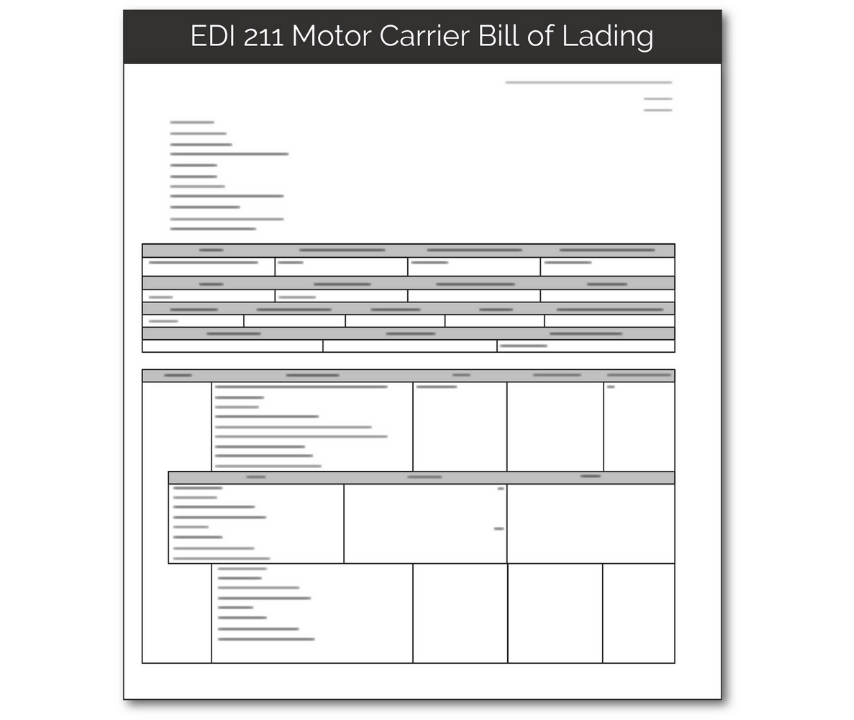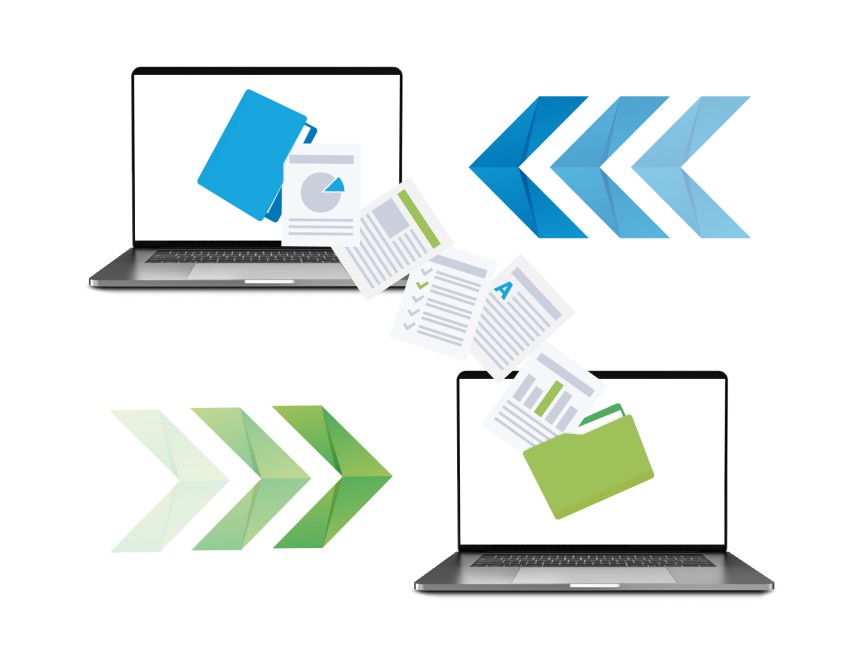EDI 211
Motor Carrier Bill of Lading

What is an EDI 211?
An EDI 211 serves as the electronic equivalent to a paper Motor Carrier Bill of Lading. This EDI transaction set is usually sent from a shipper to a carrier and acts as a legally binding description of the delivery.
EDI 211 documents follow the x12 format set by the American National Standards Institute (ANSI), a not-for-profit organization that regulates EDI formats in the U.S.
What are the Essential Components of EDI 211?
As a legally binding shipping communication document, there are several key components that must be included in a Motor Carrier Bill of Lading. These include:
- Shipment ID number
- Contact information for shipper, carrier and receiving parties
- Ship-to location address
- Product descriptions, including quantities, size, and weight
- Load information, such as number of pallets, total weight, and freight class
- Expected delivery date
- Any special instructions for shipping/handling

How do I Use EDI 211?
EDI 211 is usually sent by a shipper after the receipt of EDI 990 Load Tender Response, in which a carrier accepts an offer for a specified shipment. At times, it may be sent individually, without a corresponding carrier transaction. Just like a paper Motor Carrier Bill of Lading, this electronic version will include important details about the shipment, from the products included, to the delivery address, to special handling requirements.
The document is also legally binding, meaning that the receiving carrier is required to deliver the shipment according to the details and instructions on the Bill of Lading. In this sense, EDI 211 is akin to a work contract. When a carrier receives EDI 211, they should respond with an EDI 997 Functional Acknowledgement.
It’s important to note that EDI 211 does not contain price and payment information and does not replace an EDI 210 or EDI 810 invoice. It also does not serve as an official manifest—businesses should use EDI 215 for their manifests.

What are the Benefits of EDI 211?
Because the EDI 211 document is legally binding, it assures the shipper that the carrier will deliver goods based on the agreed terms and provides protection in case the carrier fails to do so. Additionally, the transaction carries important information and instructions about the shipment, giving the carrier a simple shipment blueprint to follow. This helps streamline the shipping process, leading to faster and more accurate deliveries.
Like all electronic interchange documents, EDI 211 is an automated document. Not only does this save time by eliminating the need for manual data entry; it also prevents errors made during the retyping process. Because EDI documents are typically protected by software security measures, this transaction has the added benefit of protecting business details, making it a better choice than an email or faxed Bill of Lading.

